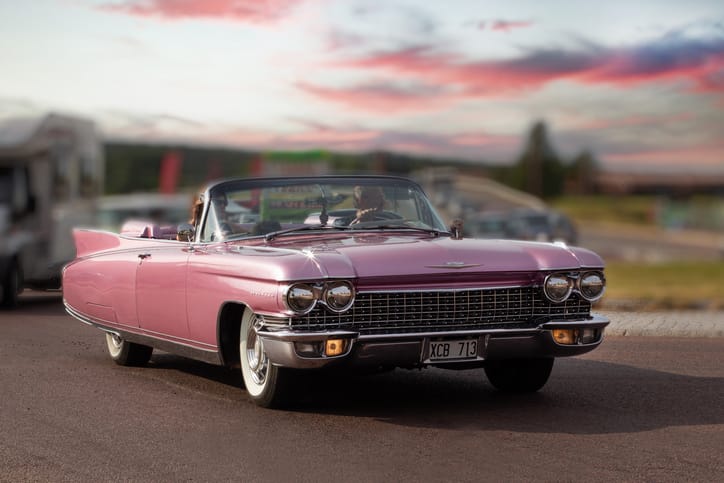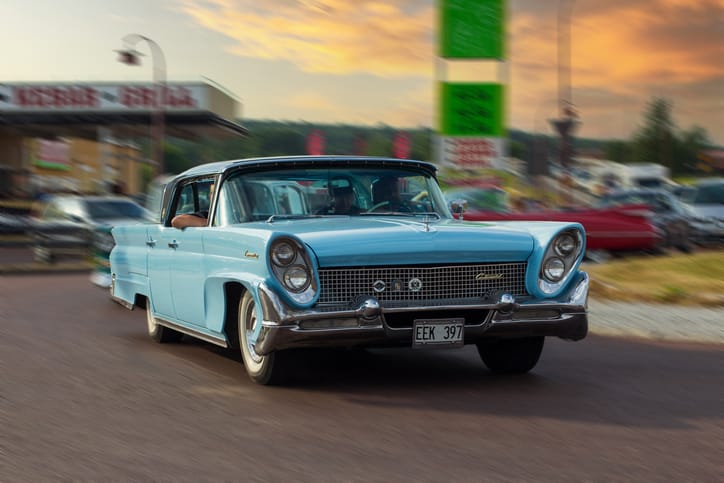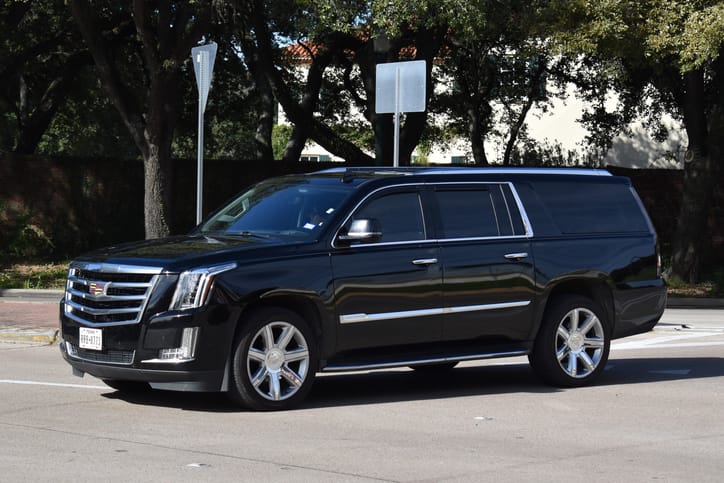American Luxury Showdown: 1960s Cadillac vs. Lincoln

The 1960s were a period of booming post-war prosperity in the United States. It was also a golden age for American luxury cars, with Cadillac and Lincoln vying for dominance on driveways and boulevards across the nation. Both brands offered a distinct take on luxury, attracting different types of buyers with their design philosophies, engineering strengths, and brand cachet. This article dives into the heart of this “American Luxury Showdown,” examining the factors that set these two titans apart.
Design: Fins, Flair, and a Touch of Space Age
The 1960s witnessed a dramatic shift in automotive design. Gone were the curvy, chrome-laden behemoths of the 1950s. In their place came sleeker, more aerodynamic shapes with a touch of the “space age” thrown in for good measure. Both Cadillac and Lincoln embraced these trends, but with distinct interpretations.
Cadillac, known for its bold and flamboyant styling, leaned heavily on the “fin” craze. The fins, prominent vertical extensions at the rear of the car, became synonymous with Cadillac in the 1950s and continued to be a design element into the early 1960s. Models like the 1960 Cadillac Eldorado Biarritz featured dramatic tail fins that tapered gracefully towards the rear, exuding an air of grandeur. As the decade progressed, the fins became more subdued, eventually disappearing altogether by the late 1960s.
Lincoln, on the other hand, took a more reserved approach. While they incorporated fins on some models, they were generally smaller and more integrated into the overall design. Lincolns like the 1961 Continental offered a more timeless elegance, with clean lines and a focus on proportion. Their signature feature was the split grille, a design element that remains a recognizable part of Lincoln’s identity today.
Engineering Prowess: Power and Innovation
Both Cadillac and Lincoln offered powerful V8 engines that delivered smooth acceleration and a sense of effortless cruising. Cadillac was known for its push-rod V8s, known for their robust construction and impressive torque figures. The 1967 Cadillac Eldorado, for instance, boasted a 472 cubic inch V8 that produced a staggering 400 horsepower.
Lincoln, however, took a more innovative approach. In 1960, they introduced the Lincoln Continental with a revolutionary overhead cam V8 engine. This design offered superior performance and efficiency compared to traditional push-rod engines, a significant leap forward for American luxury cars. While Cadillac eventually adopted overhead cam technology later in the decade, Lincoln's early innovation secured them a reputation for technical prowess.

Luxury Defined: Amenities and Interiors
The interiors of 1960s Cadillacs and Lincolns were designed to be opulent and comfortable. Plush leather seats, rich wood paneling, and deep-pile carpeting were standard fare. Both brands offered a wide array of power features, including automatic windows, seats, and air conditioning.
However, there were subtle differences in their approach to luxury. Cadillac's interiors tended to be more audacious, with bold color combinations and dramatic use of chrome accents. The 1964 Cadillac Calais, for example, featured an optional “Jet Stream” interior with a white dashboard and turquoise seats, a color scheme that would raise eyebrows today but epitomized 1960s extravagance.
Lincolns, on the other hand, prioritized a more understated elegance. Their interiors were luxurious but tastefully done, with a focus on rich leathers and genuine wood accents. The 1967 Lincoln Continental offered a luxurious cabin with a focus on passenger comfort, featuring reclining seats and a plethora of convenience features.
Brand Identity: Who Were They Targeting?
The marketing strategies of Cadillac and Lincoln differed in the 1960s, reflecting the distinct customer they were trying to attract. Cadillac positioned itself as the pinnacle of American luxury, the car for celebrities, business tycoons, and those who desired to make a grand entrance. Their advertising campaigns emphasized bold design, powerful engines, and a sense of untamed luxury.
Lincoln, in contrast, cultivated an image of understated sophistication. They targeted a more mature and discerning clientele who appreciated classic design, refined engineering, and a luxurious driving experience. Their marketing focused on heritage, craftsmanship, and a sense of timeless elegance.
The Verdict: A Matter of Taste
Ultimately, the choice between a 1960s Cadillac and Lincoln comes down to personal preference. Cadillac offered a flamboyant statement piece, a car that demanded attention and exuded an aura of success. Lincoln, on the other hand, provided a more refined and understated luxury experience, perfect for those who appreciated a touch of elegance without the theatrics.
Beyond the 1960s: A Legacy of Innovation
The “American Luxury Showdown” between Cadillac and Lincoln continued beyond the 1960s. Both brands navigated the ever-changing automotive landscape, adapting to new technologies, safety regulations, and consumer preferences.
The 1970s and 1980s: Downsizing and a Focus on Comfort
The oil crises of the 1970s forced American automakers to downsize their vehicles. Both Cadillac and Lincoln saw their iconic land yachts shrink in footprint, with a focus on fuel efficiency and improved handling. Interiors, however, remained luxurious, with advancements in ergonomics and comfort features.
Cadillac introduced significant technological innovations during this period. Their Electronic Fuel Injection (EFI) system, introduced in 1980, improved performance and fuel economy. They also pioneered the use of night vision technology in the 1980s Cadillac Seville.
Lincoln, meanwhile, focused on luxury and comfort. Their Town Car became synonymous with executive transportation, offering a spacious and opulent cabin with advanced amenities. They also embraced new technologies, like anti-lock braking systems (ABS) and airbags, becoming leaders in automotive safety.
The 1990s and 2000s: A New Era of Design and Performance
The 1990s saw a resurgence of interest in performance luxury cars. Cadillac responded with models like the sporty CTS, which offered a more European driving experience. Lincoln introduced the muscular LS sedan, showcasing a new design direction that emphasized power and athleticism.
Both brands embraced technological advancements. Onboard computers, navigation systems, and advanced audio systems became commonplace. Safety features like traction control and stability control were integrated into their vehicles.
The 2010s and Beyond: A Look Towards the Future
The 21st century brought new challenges, with a focus on environmental sustainability and autonomous driving technology. Both Cadillac and Lincoln have embraced electrification, introducing hybrid and electric vehicles to their lineups. The Cadillac Escalade Hybrid and the Lincoln Navigator PHEV represent their commitment to reducing emissions while maintaining luxury standards.

Looking towards the future, both brands are heavily invested in autonomous driving technology. Cadillac’s Super Cruise system offers a glimpse into the future of hands-free driving, while Lincoln’s Co-Pilot360 suite of driver-assistance features paves the way for increased automation.
A Continuing Legacy
The rivalry between Cadillac and Lincoln has fueled innovation in the American luxury car market for over a century. While both brands have adapted to changing times, their core values of design excellence, engineering prowess, and a commitment to luxury remain constant. The “American Luxury Showdown” continues, offering car enthusiasts a compelling choice between bold flamboyance and understated elegance.
